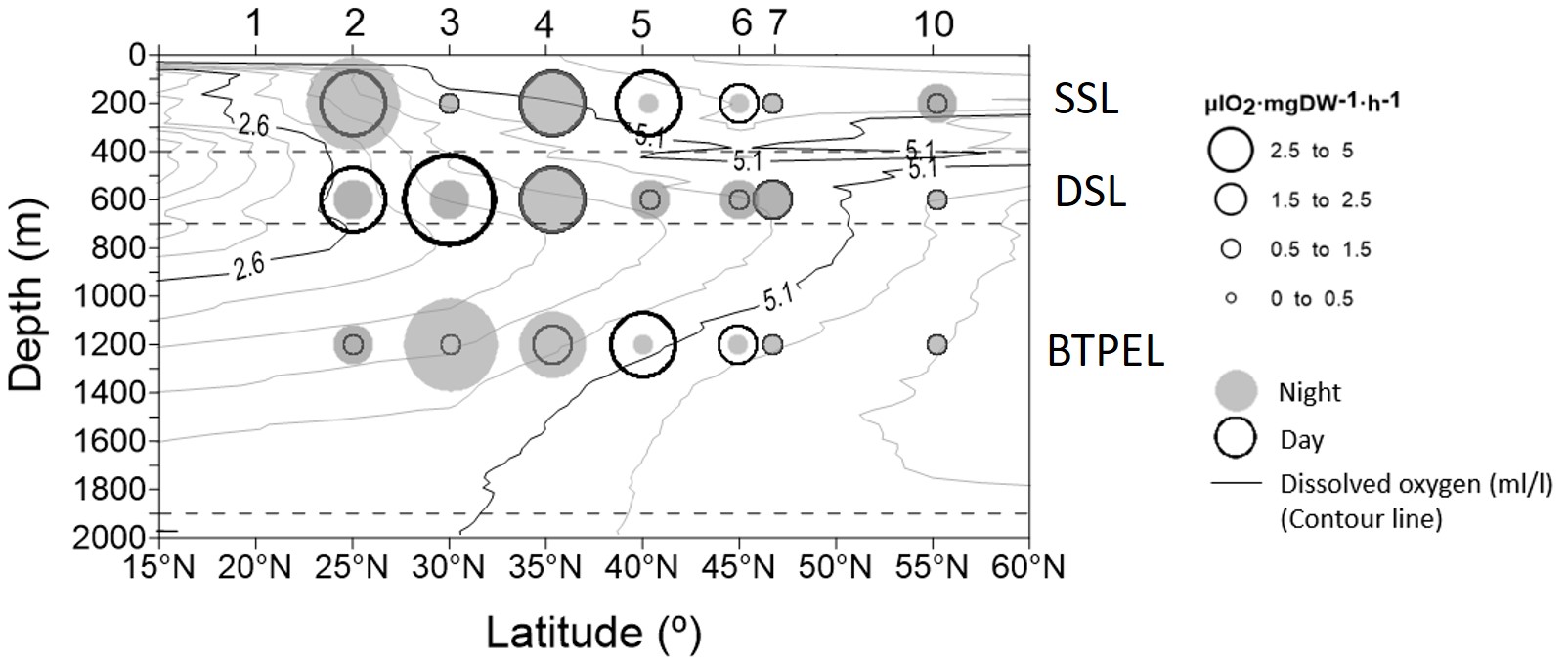Ph.D. Program in Oceanography and Global Change at the Canary Islands, Spain
Meso- and bathypelagic fishes contribute to the CO2 transport between the upper ocean to deep waters as a consequence of their feeding at superficial layers, and their respiration, defecation, excretion, and mortality at depth. Recent studies suggest that migrant micronekton transport similar amounts of carbon than zooplankton. Information about their contribution to the carbon biological pump is nowadays quite limited. However, there are even less information about the contribution of fishes living in the deep scattering layer of the genus Cyclothone to carbon export and remineralization. Here we show the vertical distribution of species of the genus Cyclothone sampled in a latitudinal transect from the subtropical to temperate waters of the North Atlantic Ocean from the surface to 2000 m depth. We also analyzed the enzymatic activity of the electron transfer system (ETS) as a proxy for respiration rates. We captured 1291 specimens of Cyclothone using a MOCNESS net, and abundances were higher during the night between 400 and 700 m depth. The vertical distribution of the species C. alba and C. braueri showed maximum values between the surface and 700 m depth. Other species such as C. pseudopallida and C. microdon showed a wider distribution reaching the 700-1900 m depth layer. Size frequency and swimming bladder measurements allowed to model the acoustic reflection to estimate density of organisms through registered data with an Acoustic Zooplankton and Fish Profiler (AZFP). ETS activity of different species showed an important variability during diurnal and nocturnal periods. C. alba (10 ±7 mg dry weight, DW) showed the lowest specific activity (0.28 ±0.24 and 0.67 ± 0.38 µlO2·mg DW-1·h-1 during day and night, respectively), while C. danae (430 ±190 mg DW) showed higher specific ETS activities (2.75 ±1.16 and 2.62 ±2.26 µl O2·mg DW-1·h-1 during day and night, respectively). This preliminary data should provide a first account of remineralization of this community in the meso- and bathypelagic zones in the ocean.




